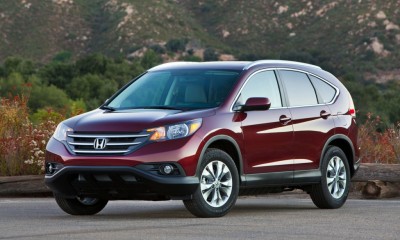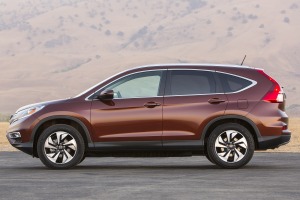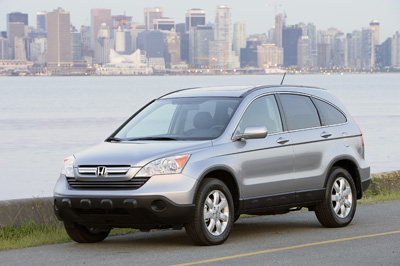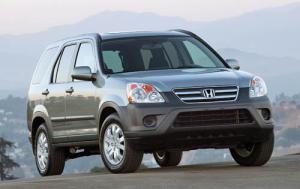With sky-high new and used car prices, many buyers are looking for "older" models that have aged well to save a significant amount of money. This, of course, puts an even greater emphasis on identifying those older vehicles with the best ratings for reliability and dependability.

And the Honda CR-V passes this test with flying colors due to its very high ratings for long-term reliability, leading to a renewed interest in its older models today.
Still, while many actual owners have found it to be a dependable vehicle when properly maintained, others have experienced at least some reliability issues.
And all cars have some reported mechanical issues, including some that may be more specific to a particular model, even those with strong reliability reputations. That's just a natural part of car ownership.
So here, ...
- We'll do an overview of some earlier CR-V generations.
- And then list possible mechanical issues that have been reported by some owners so they can be included in an inspection before buying one today.
- And then summarize the overall pros and cons of possibly buying an older CR-V.
Older Honda CR-V Overview
The Honda CR-V debuted in the late 1990's as a smaller alternative to the mainstream mid-size and full-size SUVs. Built on a car-based platform, its sedan-like handling and 4-cylinder engine made it an instant hit, while still providing the passenger and cargo room to meet most people's needs.
Since first introduced, many more compact SUVs came into this market place with various takes on the best mix of size, power and capability. While some offer larger V6 engines and others went after the off-road capability market, the CR-V's focus has always remained on its car-like drive and handling.
We consider it simply one of the best SUVs available when it comes to on-road driveability and practicality.
Fourth Generation Honda CR-V (2012 - 2016)

In Honda's fourth-generation CR-V, there are three trim levels: the LX, EX and EX-L, a then newer leather-trimmed luxury model with a navigation system option.
Even the base LX model comes with powered accessories, air-conditioning, a CD player, a USB input for the four-speaker audio system, Bluetooth and Honda's i-MID system for phone and audio functions. The more popular EX model adds amenities like keyless entry, alloy wheels, an upgraded stereo, a moonroof and privacy glass.
At the top of the line, the EX-L, with some found with the optional navigation system, also includes a rearview camera, satellite radio and a subwoofer.
All models of this version are outfitted with a 2.4-liter four-cylinder that puts out 185 horsepower matched with a five-speed automatic transmission. Gas mileage is 31 MPG on the highway with front-wheel drive and 30 MPG with all-wheel drive. All models are rated to tow 1,500 lbs.
2012 - 2016 Honda CR-V Possible Mechanical Problems
While generally considered quite reliable, like all vehicles, there were a few reported issues that some owners encountered that should be included in a pre-purchase inspection today:
Vibration or Shudder: Some owners reported experiencing a vibration or shudder while accelerating, which was linked to problems with the torque converter in the transmission.
Battery Drain: Certain CR-V models had issues with excessive battery drainage. This could lead to a dead battery if the vehicle was not used for a few days. It was often attributed to software issues or electrical system malfunctions.
Air Conditioning Problems: There were reports of problems with the air conditioning system in some of these CR-Vs, including issues with the A/C compressor or leaks in the system, resulting in reduced cooling or failure of the A/C system.
Starter Motor Issues: Some owners experienced starter motor failures or issues, leading to difficulties starting the vehicle.
Excessive Oil Consumption: A small number of CR-Vs were reported to have issues with excessive oil consumption between scheduled oil changes.
It's important to note that while these issues were reported by some owners, they didn't affect most vehicles, and Honda typically addressed many of these problems through recalls, technical service bulletins, or warranty repairs.
Third Generation Honda CR-V (2007 - 2011)

Honda redesigned the CR-V for the 2007 model year adding a fairly significant new look, but keeping the four-cylinder engine and five-passenger seating. This CR-V shaved 3 inches off its overall length than the previous 2002-06 generation. Even so, the wheelbase and interior dimensions remained virtually unchanged.
For improved driving performance, it also was designed with a lower center of gravity and track width grew. Other changes included the concealment of the previously externally-mounted spare tire and the new placement of the gearshift lever from the steering column to the central panel.
2007 - 2011 Honda CR-V Possible Mechanical Problems
The third-generation Honda CR-V, is again considered reliable, but like any vehicle, there have been some reported issues by owners which should therefore be checked before buying one today.
Power Steering Leaks: There were occasional reports of power steering fluid leaks in some CR-Vs, leading to issues with power steering performance. This was often due to a leaking power steering hose or a faulty power steering pump.
Air Conditioning Compressor Failures: Some owners experienced problems with the air conditioning compressor failing prematurely, resulting in a lack of cold air or complete A/C failure.
Starter Motor Issues: Similar to the fourth generation, a few owners reported problems with the starter motor failing or causing difficulties in starting the vehicle.
Rust Issues: In regions where road salt is used heavily during winter, some CR-Vs were reported to have premature rusting issues, particularly on the rear wheel arches and liftgate.
Dashboard Rattles and Noises: Some owners noted interior rattles or squeaks, particularly from the dashboard or interior panels. While not a mechanical issue, it affected the overall driving experience for some.
Transmission Problems: While not as common as in some other Honda models of different generations, there were occasional reports of transmission issues like harsh shifting or occasional slipping.
Car Buying Tips:
Do This For The Best Trade-In Price
Understand Wholesale And Trade-in Values
How To Get The Lowest Rate Car Loan
Second Generation Honda CR-V (2002 - 2006)

This redesign added more interior room, additional power and new styling. Cabin width grew by 3.6 inches, rear leg room increased 2.7 inches, and available cargo space grew by 5 cubic feet.
A new 2.4-liter four-cylinder engine increased output to 160 horsepower from the 146 produced in the earlier 2.0-liter. Power windows, power locks, cruise control, cassette/CD audio, tilt steering, and a height-adjustable driver's seat were standard.
Antilock brakes can only be found in the EX model from this generation. Front side airbags were added as a new standard feature on the EX and optional on the LX. The same with alloy wheels. The EX also got a standard sunroof, however, none of the models featured a leather interior, standard or optional.
2002 - 2006 Honda CR-V Possible Mechanical Problems
The second generation CR-V, while again quite reliable, also had a few reported issues that some owners encountered which should be inspected pre-purchase:
Air Conditioning Compressor Failures: Similar to some later models, some CR-Vs from this generation experienced problems with the air conditioning compressor failing prematurely, resulting in a lack of cold air or complete A/C failure.
Rust Issues: In regions where road salt is used heavily during winter, some second-generation CR-Vs were reported to have premature rusting problems, particularly around the rear wheel arches and liftgate.
Transmission Problems: Some owners reported occasional transmission issues, such as harsh shifting or occasional slipping.
Electrical Issues: There were sporadic reports of electrical system problems, including issues with power windows or door locks, as well as problems with dashboard lights or indicators.
Starter Motor Problems: A few owners encountered issues with the starter motor failing or causing difficulties in starting the vehicle.
Spare Tire Mount Rusting: In certain cases, the spare tire mount on the rear door showed signs of rust, especially in areas with harsh weather conditions.
Overall Older Honda CR-V Pros And Cons
Older Honda CR-V Pros
Cost Savings: Older CR-Vs are generally more affordable upfront compared to newer models. They've already depreciated significantly, offering a cost-effective option for buyers.
Reliability: Honda CR-Vs, especially from the second to fourth generations, have a reputation for reliability. A well-maintained older CR-V can still offer dependable performance, making it a good choice for budget-conscious buyers.
Lower Insurance Costs: Older cars often have lower insurance premiums compared to newer models, which can contribute to overall cost savings.
Ease of Maintenance and Repairs: Parts and service for older CR-Vs tend to be more accessible and affordable. They are well-known in the market, and mechanics are generally familiar with their design, making repairs and maintenance more straightforward.
Simplicity: Older models have fewer complex electronic systems, which could mean fewer potential points of failure and simpler DIY maintenance for some repairs.
Older Honda CR-V Cons
Outdated Features: Older CR-Vs might lack the latest safety features, infotainment technology, and convenience upgrades found in newer models. This could affect comfort and convenience.
Potential for Repair Costs: Older vehicles may require more repairs or part replacements due to wear and tear, potentially offsetting the initial cost savings.
Fuel Efficiency: While CR-Vs are generally fuel-efficient, newer models often have more advanced engines that provide better fuel economy compared to older ones. This might translate to higher fuel costs over time.
Safety Considerations: While older CR-Vs have basic safety features, newer models often come with advanced safety technologies that might offer better protection in accidents.
Things To Do When Considering An "Older" CR-V
Locate Lower Mileage Vehicles: They are certainly out there to be found with careful and patient shopping. Be willing to drive a distance if you have to.
Vehicle History and Maintenance: Ask for the vehicle history report (CarFax or AutoCheck) as well as documented maintenance and repair records. If not provided by the Dealer or private seller, it's usually best to move on.
Pre-Purchase Inspection: Have the vehicle independently inspected before making a final decision. This usually will cost in the $150-$200 range but is well worth it given the potentially thousands in savings over the long term.
 By Josh Rosenberg
By Josh Rosenberg